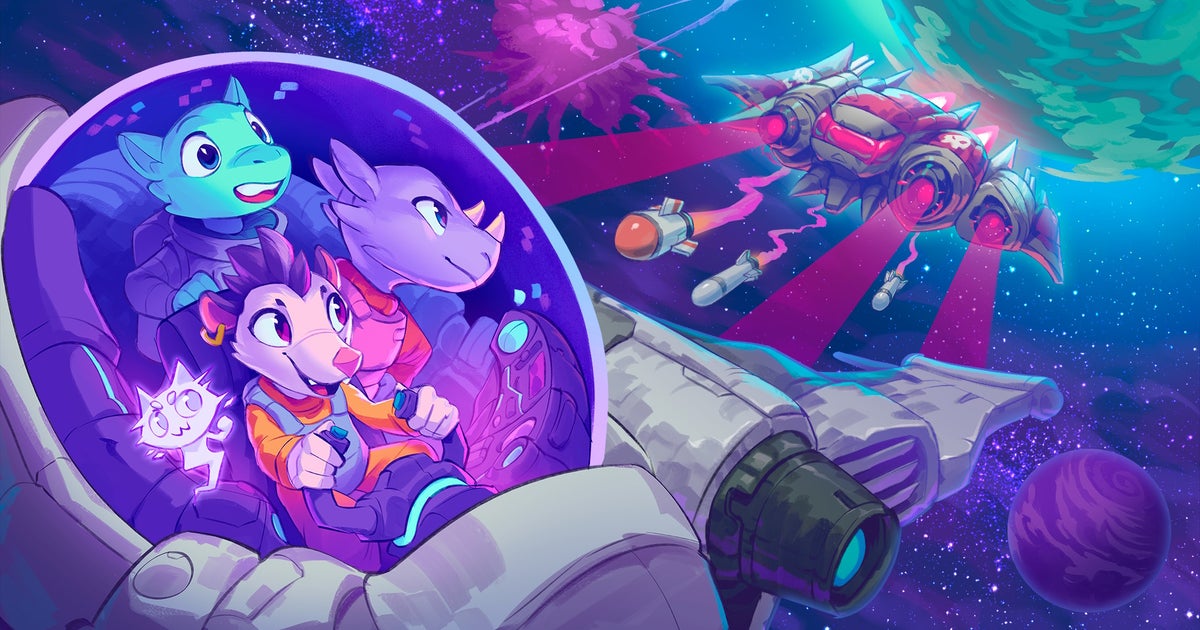You have just read a blog post written by Jason McIntosh.
If you wish, you can visit the rest of the blog, or subscribe to it via RSS. You can also find Jason on Twitter, or send him an email.
Thank you kindly for your time and attention today.

I finished Cobalt Core in June, around six months and 45 play-hours after starting it. Over the weekend I discovered, while checking out a newly added play mode, that you can replay the endgame sequence any time you like. So I did, and I cried at least as much on my second visit as I did on my first.
Cobalt Core is one of my all-time favorite solitaire videogame experiences. I’m not sure it’s a great game; mechanically, it’s just a variant of the undeniably great Slay the Spire. But I have found it a much more welcoming game, combining a more accessible Spire-like ruleset with an attitude that is brightly wry, slightly melancholy, and a little wounded. Which, you know, resonates.
I stuck with Slay the Spire for as long as I did, years ago, because its design is so brilliantly original—and not because of its unrelenting difficulty. Spire is a game that actively resists your success, pressing you with a weight which you start to feel on the second battle of the first level if you play out your deck with anything less than perfect efficiency. Subsequent battles force your deck further and further out of balance as enemies grind you down with successively stronger attacks and curses, outpacing your ability to recover between battles. Every fight feels more and more painful, every victory scraped raw from the serrated teeth of defeat, until finally all my numbers zero out and I can bleed no more.
I mean, it’s fun! It’s a great game. It just doesn’t want you to win very often, is all. And that’s okay, that’s part of the fun! I have only “won” Spire once, somehow reaching the end of the run with only one of the three main characters. That was pre-pandemic, so I had plenty of time to try to repeat the feat, and I have long since had to content myself with considering this meager triumph as much of a victory as I’ll ever get from that game.
Cobalt Core does not have this attitude. It is a much easier game, even on its hardest difficulty settings, once you get the hang of it. With its emphasis on positional combat, the key to success is to completely dodge or block all enemy attacks, usually with no loss of health or other ill effects.
Your ship only ever has a handful of hit points, compared to the dozens-to-hundreds of HP that a Slay the Spire character has. Cobalt Core enemies want to do just as many nasty things to you as Spire baddies do—and they can actually nail you a lot faster, if you let them. But right from the start you can gaily dance your ship around almost all enemy attacks, so long as you pay attention, earn a bit of familiarity with the different characters’ decks, and practice a modicum of patience. The final battle of every winning run is tough, but beatable, feeling more like a dangerous bomb to carefully defuse than a malevolent enemy who wants you dead as quickly as possible.
And that right there is what I wanted from Slay the Spire all along, it turns out: I wanted its amazing, genre-defining design paired with a play-style whose challenge is closer in intensity to a crossword puzzle than a chess tournament. Coblat Core knows it’s easier, too, putting its ultimate victory condition behind 18 successful runs, versus the handful that Spire asks of you. I got there in 33 tries, which feels like the right win/loss ratio for Cobalt Core, because it is at least as interested in telling you a meaningful and moving story as it is in giving you a deck-building challenge. (Slay the Spire has a story insofar as any questions about the characters’ motivation and purpose are answered by the game’s title.)
And that I cried at its ending—twice—should tell you how well I thought it manages that! The Cobalt Core cast of characters, and their ongoing dialogue throughout every run and through all the intervening cutscenes, sparkles with so much genuine wit, charm, and surprising tenderness. The game is a funny-animal cartoon above all, and its surface-level humor is indeed fantastic, leaning into the time-loop framing with jokes that have setups and unexpected punchlines that stretch across several runs. (A certain long-payoff joke about Riggs’s boba tea is one for the ages.) And part of the brilliant comedy writing is the flashes of emotion, honesty, and pain that one glimpses beneath this veneer.
The finale of Cobalt Core recapitulates the shared trauma that the eight (or nine?) main characters have experienced over umpteen time loops of terrible violence—and for all their joking around, they do let slip now and again how utterly fucked up and mentally scarring their situation is. It gives them, together, the catharsis they all want so badly. After six months and dozens of runs with them, I wanted it so badly for them, too. The game ends with an act of long-denied unity even as the characters commit an unfathomable shattering, and it is perfect.
Great game.
Next post: Observations from initial cannabis experiments
Previous post: Fix menu-option skipping when using controllers with Steam Deck
To share a response that links to this page from somewhere else on the web, paste its URL here.